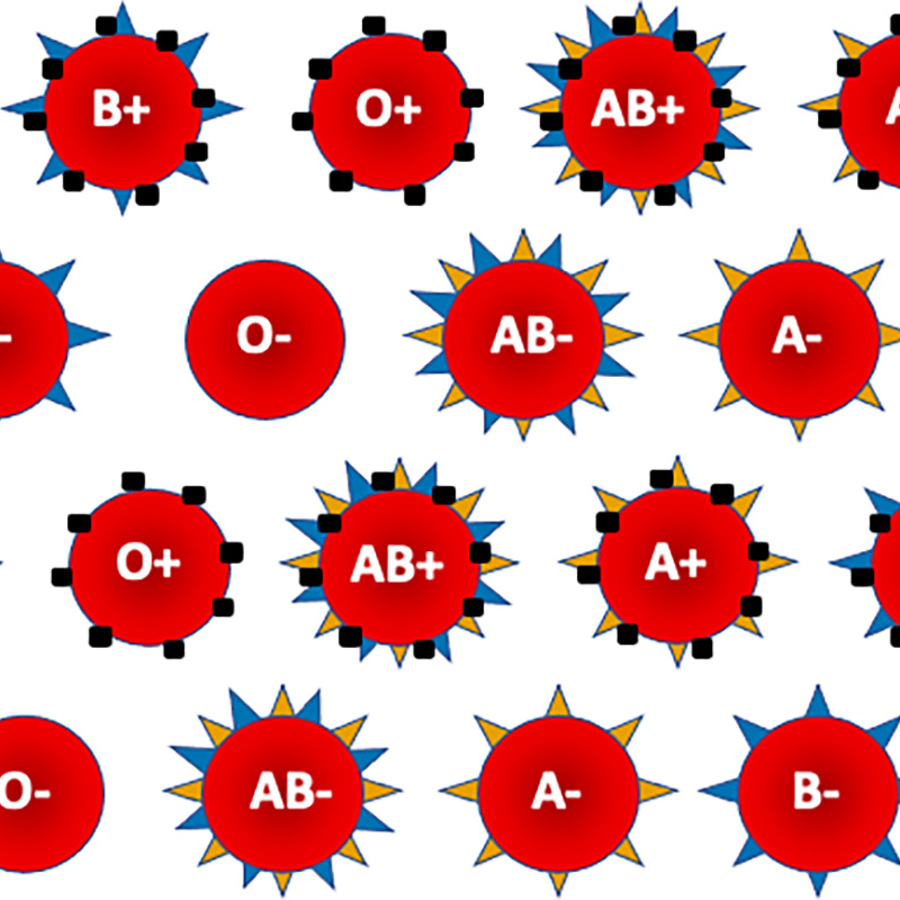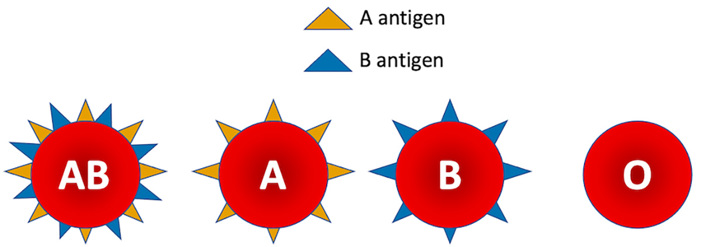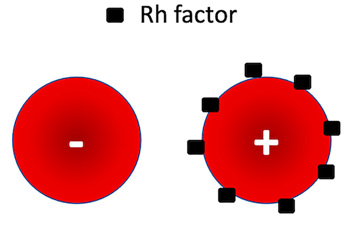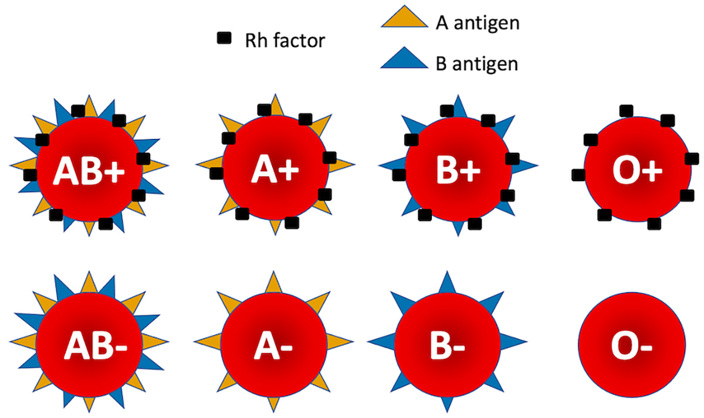
How many blood types are there?
February 14, 2020

- Related Topics:
- Blood type,
- Evolution,
- Human evolution,
- ABO blood type,
- Rh factor
A high school student from South Africa asks:
“How many blood types are there and what are they? Can new types develop over time?”
There are eight major blood types: A+, A-, B+, B-, AB+, AB-, O+, and O-. But there are lots of variations within these eight that aren’t often mentioned!
These eight blood types are made from two main blood groups. One of the groups is the ABO blood group, which is where the letter comes from. The other is the Rh blood group, which is where the + or – comes from.
Your blood type is defined by tiny decorations on the outside of your blood cells. These are called antigens.
These antigens can be made of sugars or proteins. Most antigens help the blood cell with different activities such as transporting other proteins into and out of the cell and helping the blood cell attach to other molecules in our bodies.
If a person has Type A blood, this means they have A antigens present on their red blood cells. Similarly, if they have Type B blood, they have B antigens on their blood cells.
If someone has both A and B antigens, they have Type AB blood. And someone without any A or B antigens at all has Type O blood.

Rhesus (Rh) factor is another protein found on the surface of red blood cells. If a person is Rh positive, that means this protein is seen on their red blood cells.

So, if a person’s blood types AB+, they have A, B, and Rh antigens present on their blood cells. If a person’s blood type is O-, they don’t have any of those antigens.

ABO and Rh are the blood groups we talk about most often. But there are actually 33 different blood groups! Combined, they represent over 300 antigens!1
Some of the more well-known groups include the MNS, P, Lutheran, Kelly, Lewis, Duffy, and Kidd groups.
Some of the antigens of these groups have different functions from those of the ABO and Rh groups, such as helping the red blood cell maintain its structure. However, because there are so many of them, we don’t know the function of all the molecules that live on the surface of red blood cells.
Evolution of Blood Types
Type A blood is actually thought to be the most ancient. All of our distant ancestors would have had Type A!2
Type B and Type O evolved later due to mutations in the genetic code. It’s thought that the mutations that caused Type B and O to come into existence actually helped the cells fight off certain diseases.3
Rh factor is also ancient as it has evolved from a molecule that can be found on Archaea – the most ancient life form on Earth. You can read more here.
The less common blood antigens may also provide some sort of advantage in certain conditions. But we just don’t know enough about them to say for sure.
It definitely isn’t impossible for more blood groups to evolve in the future! All of them came about because of mutations.
But it would be pretty rare to get a mutation that changed your blood antigens. And if the mutation is harmful, or messes up your blood cells, it probably won’t last long in the population.
But who knows – maybe in the future we’ll have even more blood types!
Knowing a person’s blood type is important for blood transfusions and other medical procedures. One blood type does not make a person any healthier or stronger but is another way that makes each and every person unique!
![]()

Author: Kathryn Reyes
When this answer was published in 2020, Kathryn was a student in the Stanford MS Program in Human Genetics and Genetic Counseling. She wrote this answer while participating in the Stanford at The Tech program.
 Skip Navigation
Skip Navigation
